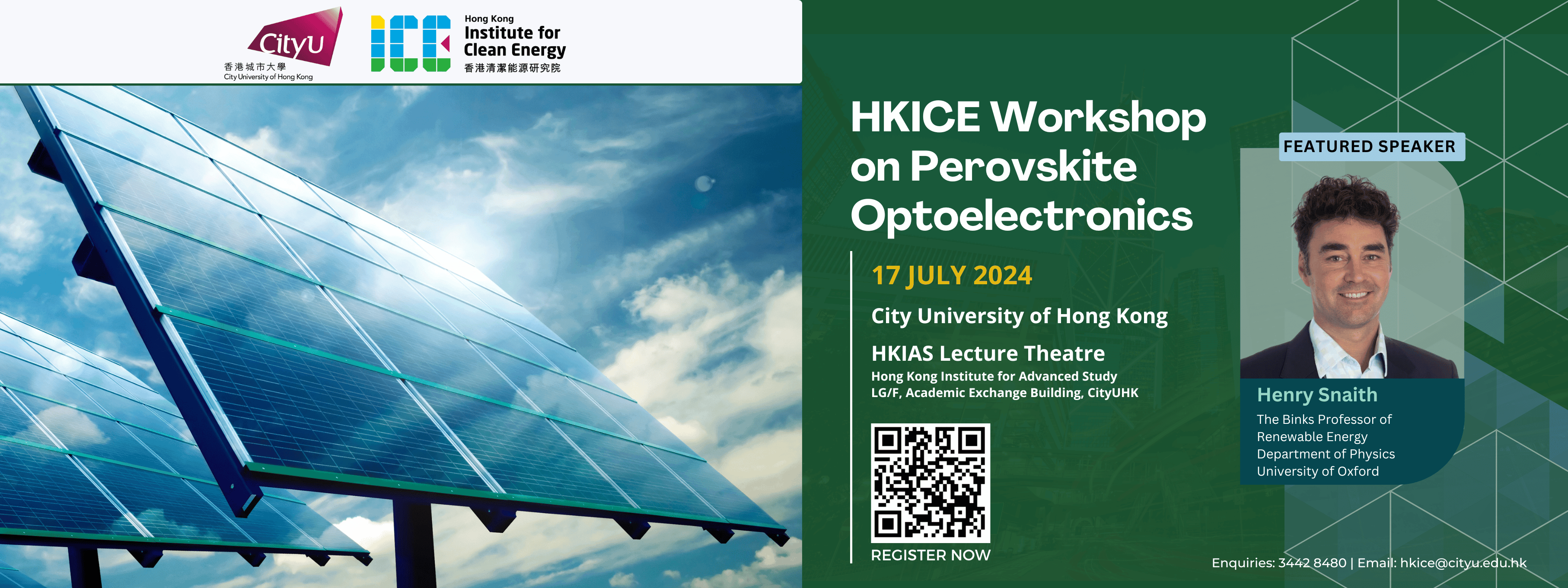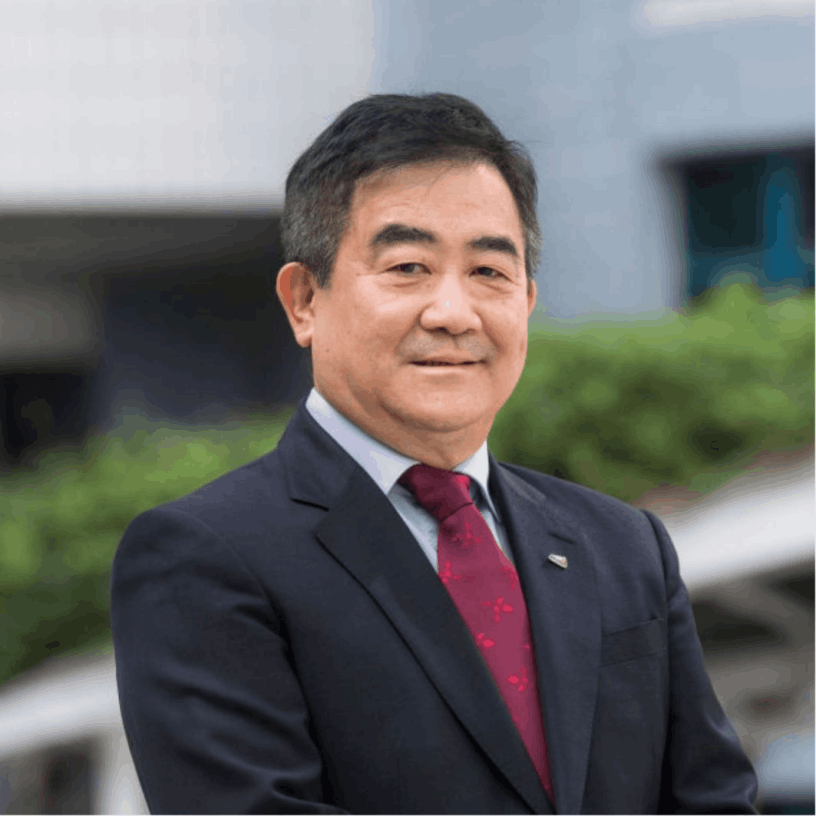Invited Speaker
Biography
Alex Jen is the Lee Shau-Kee Chair Professor and Founding Director of the Hong Kong Institute for Clean Energy at the City University of Hong Kong. He also served as the Provost of CityU during 2016-2020. He received his B.S. from the National Tsing Hua University in Taiwan and Ph.D. from the University of Pennsylvania in USA. Before arriving at CityU, he had served as the Boeing-Johnson Chair Professor and Chair of the Department of Materials Science & Engineering at the University of Washington, Seattle. He was also appointed as the Chief Scientist for the Clean Energy Institute endowed by the Washington State Governor. He is a distinguished researcher who published more than 1000 SCI papers with >92,000 citations and an H-index of 155. He is also a co-inventor of 71 patents and invention disclosures.
For his pioneering contributions in organic photonics and electronics, Professor Jen was elected as Academician by both the European Academy of Sciences and the Washington State Academy of Sciences. He was also elected as Fellow for several professional societies, including AAAS, MRS, ACS, PMSE, OSA, and SPIE. He was named by the Times Higher Education (THE) in 2018 as one of the “Top 10 University Researchers in Perovskite Solar Cell Research”. In addition, he was recognized by Thomson Reuters as one of the "World’s Most Influential Scientific Minds of 2015 and 2016 and by Clarivate as one of the "Highly Cited Researchers" in Materials Science from 2014-2023.
Printable Organic and Perovskite Solar Cells for Clean Energy
Alex JEN
Abstract
Our recent study on charge generation and recombination in bulk-heterojunction and planar-mixed heterojunction blends comprising a crystalline polymer donor with Se-containing Y6-derived non-fullerene acceptors has shown both high photovoltaic internal quantum efficiencies and high external electroluminescence quantum efficiencies. Crystallographic and spectroscopic studies reveal that the pseudo-2D, fused-ring molecular acceptors are not only intrinsically highly luminescent but also meets the criteria in achieving intrinsically radiative recombination within the blend by promoting delocalized excitons with much longer luminescent lifetime and reduced exciton binding energies. These results provide the important demonstration of efficient OPV blends to achieve PCEs close to 20%. Regarding the development of perovskite solar cells (PSCs), several novel interface and additive engineering approaches have been developed to enable PSCs to show very high PCE (>26% certified) and stability in the inverted architecture devices. Moreover, new multifunctional redox mediators have also been developed to overcome the halide segregation issues that strongly hinder the development of highly efficient and stable large-bandgap PSCs. The resulting devices showed very low photovoltage loss and high PCE >20%. Their integration with OPV to form 2-T tandem devices has shown record-high PCE of 26.1% with good operational stability. Finally, the scalability and environmental stability of PSCs will be discussed to show their promise for commercialization.
References
1. “Redox Mediator-Stabilized Wide-Bandgap Perovskites for Monolithic Perovskite-Organic Tandem Solar Cells”, S. Wu, Y. Yan, J. Yin, K. Jiang, F. Li, Z. Zeng, S-W. Tsang, A. K-Y. Jen, Nature Energy, 2024, https://doi.org/10.1038/s41560-024-01451-8.
2. “Hydrogen Bond-Bridged Intermediate for Perovskite Solar Cells with Enhanced Efficiency and Stability”, F. Li, X. Deng, Z. Shi, S. Wu, Z. Zeng, D. Wang, Y. Li, F. Qi, Z. Zhang, Z. Yang, S-H. Jang, F. R. Lin, S-W. Tsang, X. K. Chen, and A. K.-Y. Jen, Nature Photonics, 2023, 17, 478.
3. “Advances and Challenges in Understanding the Microscopic Structure–Property–Performance Relationship in Perovskite Solar Cells”, Y. Zhou, L. Herz, A. K-Y. Jen, and M. Saliba, Nature Energy, 2022, 7, 794.
4. “Dilution Effect for Highly Efficient Multiple-Component Organic Solar Cells”, L. Zuo, S. B. Jo, Y. K. Li, Y. Meng, R. J Stoddard, Y. Liu, F. Lin, F. Liu, D. S. Ginger, H-Z. Chen, A. K-Y. Jen, Nature Nanotech, 2022, 17, 53.
5. “Planar-Mixed Heterojunction Organic Photovoltaic Suppresses Recombination Loss”, K. Jiang, J, Zhang, C. Zhong, F. Lin, F. Qi, Q. Li, Z. Peng, W. Kaminsky, S. H. Jang, J. Yu, X. Deng, H. Hu, D. Shen, F. Gao, H. Ade, M. Xiao, C. Zhang, and A. K-Y. Jen, Nature Energy, 2022, 7, 1076.
6. “2D Metal–Organic Framework for Stable Perovskite Solar Cells with Minimized Lead Leakage”, Shengfan Wu, Zhen Li, Mu-Qing Li, Yingxue Diao, Francis Lin, Jie Zhang, Peter Tieu, Wenpei Gao, Feng Qi, Xiaoqing Pan, Zhengtao Xu, Zonglong Zhu, Alex K.-Y. Jen, Nature Nanotech, 2020, 15, 934.
7. "Prospects and Challenges for Perovskite-Organic Tandem Solar Cells", S. Wu, M. Liu, A. K.-Y. Jen, Joule, 2023, 7, 484.
8. "Renewed Prospects for Organic Photovoltaics", G. Zhang, F. R. Lin, F. Qi, T. Heumüller, A. Distler, H-J. Egelhaaf, N. Li, P. Chow, C. J. Brabec, A. K.-Y. Jen, H.-L. Yip, Chem. Rev., 2022, 122, 14180.
9. "Designs from Single Junctions, Heterojunctions to Multijunctions for High-Performance Perovskite Solar Cells", X. Wu, B. Li, Z. Zhu, C-C. Chueh, A. K.-Y. Jen, Chem. Soc. Rev., 2021, 50, 13090.

